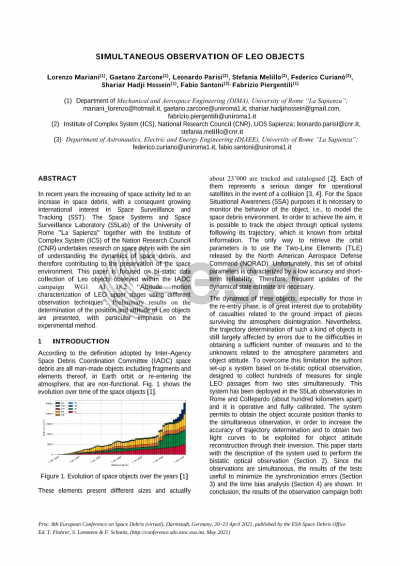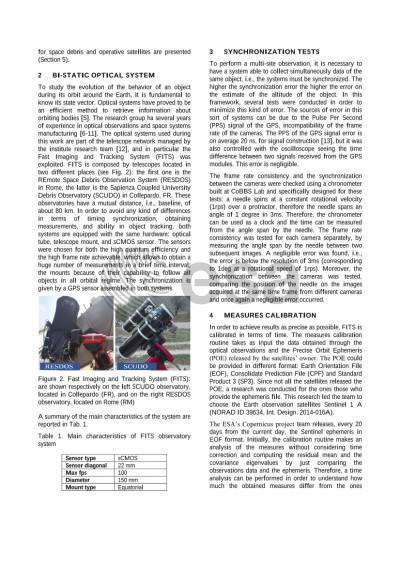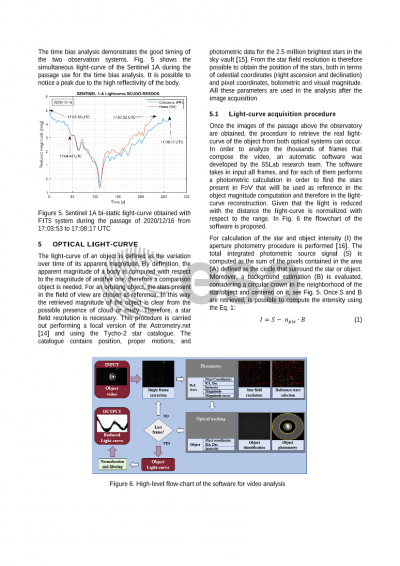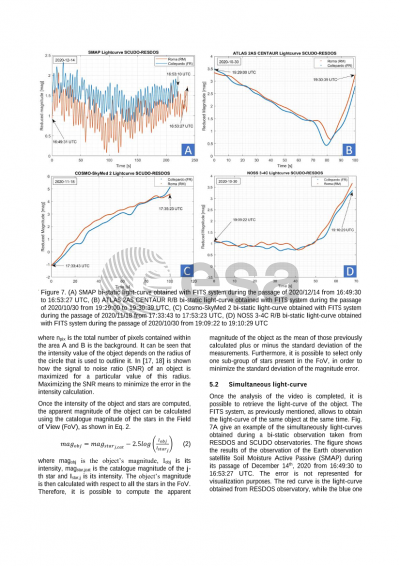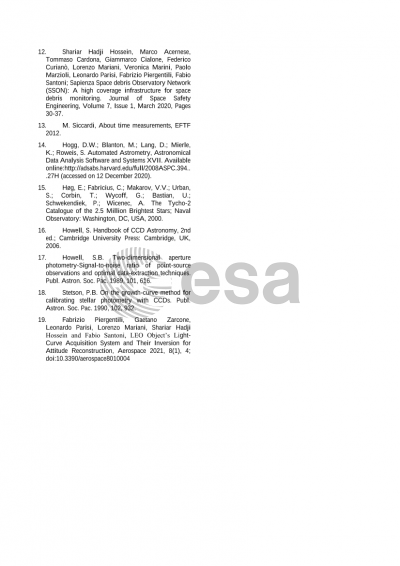Document details

Abstract
In recent years the increasing of space activity led to an increase in space debris, with a consequent growing international interest in Space Surveillance and Tracking (SST). The Space Systems and Space Surveillance Laboratory (S5Lab) of the University of Rome "La Sapienza" together with the Institute of Complex System (ICS) of the Nation Research Council (CNR) undertakes research on space debris with the aim of understanding the dynamics of space debris, and therefore contributing to the preservation of the space environment. The dynamics of these objects, especially for those in the re-entry phase, is of great interest due to probability of casualties related to the ground impact of pieces surviving the atmosphere disintegration. Nevertheless, the trajectory determination of such a kind of objects is still largely affected from errors due to the difficulties in obtaining a sufficient amount of measures and to the unknowns related to the atmosphere parameters and object attitude. In order to deal with these issues the authors set a system based on bi-static optical observations permitting to overcome the effect of measures shortness, capable to collect hundreds of measures for single LEO passage from two sites simultaneously. This system has been deployed in the S5Lab observatories in Rome and Collepardo (about hundred kilometres apart each other) and it is operative and fully calibrated. The system permits to obtain the object accurate position thanks to the simultaneous observation, in order to increase the accuracy of trajectory determination and to obtain two light curves to be exploited for object attitude reconstruction through their inversion. In this paper we describe the methods used and present the first results of simultaneous observation on LEO objects observed within the IADC campaign WG1 AI 38.2 “Attitude motion characterization of LEO upper stages using different observation techniques” both in the position and attitude determination.
Preview
